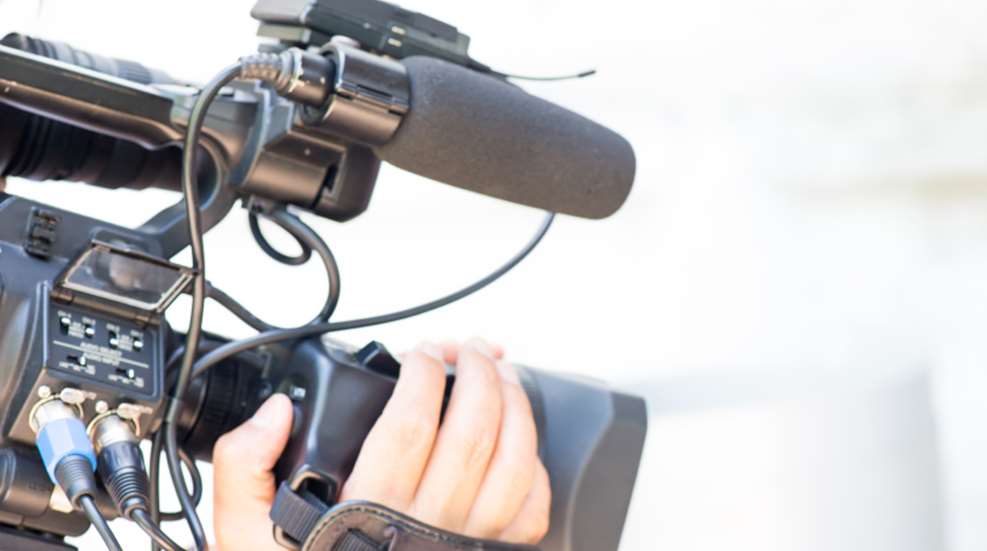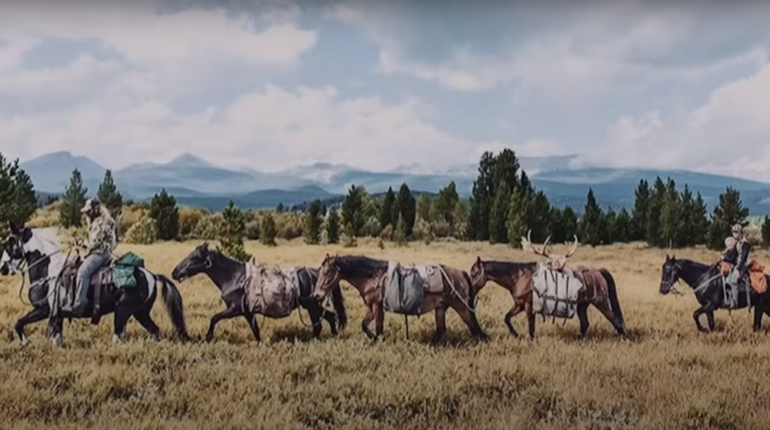
Everyone loves a good movie, and if not everyone, almost everyone. They give viewers a glimpse into a life they’ve never known, open up feelings of nostalgia, and offer a chance to escape into a new world.
So if you’re looking to capture your hunts on film to show hunting skeptics the art of the sport, have a viewing on a rainy day, or maybe even turn into a feature film, here are a few tips you may want to consider. The following is courtesy of Tom Petry’s “Filming Your Hunts” seminar from the 2016 Great American Outdoor Show.
Sensors
Sensor size is important. Very important. Since hunting can happen anywhere, day or night, you’re not always going to have access to the best lighting. Dusk, dawn, the shade from trees or brush can all limit what your camera sees, especially if the sensor size of the camera is small. A sensor ultimately determines how much light a camcorder uses to create an image, and the bigger the sensor the more information (and light) it can gain from whatever image it’s viewing. If you want the best shot—a clear image of your hunt—you may want to look into larger camera sensors.
Although this topic can get very complicated and technical, the research is important. Larger image sensors not only perform better in low-light scenarios (a likely case for many hunts), they also reduce digital noise and play a major factor in pixel density, crop factor and image size.
Some camcorders with large sensor size are the Sony PMW-F3, Sony NEX-FS100, Panasonic AG-AF100 and the JVC Picsio CMOS
Audio
Poor audio not only distracts the viewer but can cheapen your film. Do yourself a favor when filming your hunts and don’t overlook audio; it’s just as important as good picture quality.
To really capture the sounds of your hunt, you’ll want to use two channels of audio. You can either record this in stereo, left and right speakers, or in different channels that you can later edit.
One channel of audio should be used with a low impedance microphone, attached to your person. A low impedance microphone is a norm in the video production world; they’ve taken the stage that was once manned by high impedance microphones. Low impedance mics are less affected by electronic hums from fluorescent lighting and small electric motors, and long cables can be used without worry of outside interference. This microphone will pick up your breathing, any comments you make while you’re in the stand, and sometimes even your heartbeat. This gives your film a personal connection for viewers. They can feel as if they’re right there with you.
The second audio channel should be reserved for a shotgun or parabolic microphone. These modified mics, with high grain amplifiers, can pick up sounds from a distance of 100 yards or more. This channel will capture the crunching of leaves, a bull elk bugle, or the trickling of the river just over the hill. Background noise helps to put viewers in the right environment as well as add depth to your film.
Support Devices/Mounts
A mount, such as a tripod, is an important tool. There are a variety of tripods, so you can pick the right one for you in regards to height, adjustability and weight. This type of mount will assist in stable filming, smooth panning, and give your arms a break.
A lightweight tripod is best since you’ll most likely have to carry it with you, but don’t forget to purchase one that meets a list of other criteria. Be sure it’s the right height for you, that the legs will not bend under the weight of your video camera, and that the feet are made of durable rubber mounted with metal hardware. Purchasing a tripod that meets all these requirements will make filming easier, more comfortable and will prolong the life of your equipment.
Expanding Your Tool Belt
A last bit of advice: Instead of purchasing an upgraded version of your camcorder, purchase a different camcorder or new audio or lighting equipment. Unfortunately the tools for videography are not cheap, but the more you have the more experience you will gain from using a variety of equipment. You can also look into adapters that may take your current camcorder to the level of a newer version, saving you a lot of money. Although this information is just the tip of the iceberg on outdoor filming, we hope you use it as a basis for research.
Once you’ve created your masterpiece, look into outdoor and hunting film festivals. They’re a great place to collaborate with other like-minded film makers, and an impactful way to promote the tradition of hunting.
Film Festivals:






































